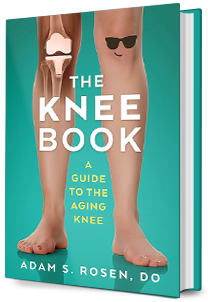Partial Knee Replacement
Knee arthritis is an inflammation of the joint due to loss of cartilage. Some people have isolated arthritis that is limited to one part of the knee, sparing the rest of the joint. If conservative treatment options do not control their pain they may be a candidate for a partial knee replacement.
A partial knee replacement only replaces a part of the knee, so most patients have an easier recovery and their knee may feel more like a normal knee when compared to a total knee replacement.
A partial medial compartment arthroplasty, sometimes called a uni, replaces the medial side or inside half of the knee. The end of the thigh bone (femur) and the top of the shin bone (tibia) are replaced with metal and plastic.
Another partial knee replacement is a patellofemoral arthroplasty. This replaces the knee cap joint of the knee. The back of the knee cap (patella) is resurfaced with plastic and part of the thigh bone (femur) is resurfaced with metal.
As with any surgical procedure there are risks which may include infection, blood clots, stiffness, leg length discrepancy, pain, injury to nerves or vessels, fracture, dislocation, the need for a transfusion or the need for additional surgery.
Not all patients are candidates for partial knee replacement. If you have a significant deformity or more global arthritis a knee replacement {link to knee replacement page} may be a better surgical option.
Like all joint replacements, a partial knee replacement may fail over time and require a revision.
You can find more detailed information about partial and total knee replacement surgery, as well as information about the risks, benefits and the recovery here.






